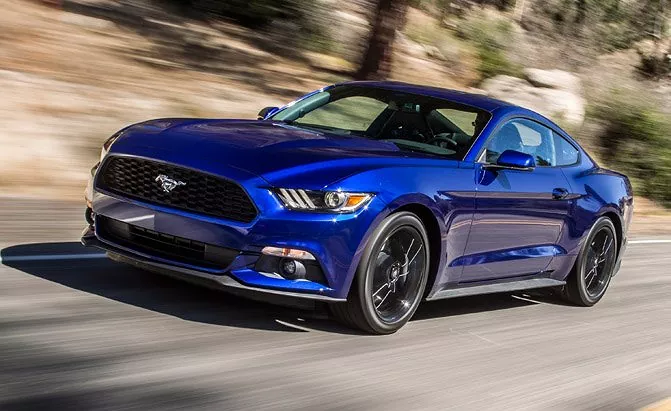Requiem for a Coupe: Two-Door Cars Are Disappearing
It is time to add coupes to the Red Book. In general, the vector of progress, including in the auto industry, is for the good. With each generation, cars become safer, more powerful, comfortable, economical, and environmentally friendly. But the trend toward the disappearance of coupes and three-door hatchbacks is surprising and saddening. Indy Auto Man, the Indianapolis dealer of used cars, explains current tendencies for the coupe extinct species.
Personal luxury
The history of “personal luxury” in the USA is related to large, well-equipped, and comfortable two-door cars without sporting inclinations. Something like Gran Turismo in its literal sense: a vehicle for long, comfortable trips, perhaps even travel, alone or together. Of course, most models had a fairly spacious rear row, but still, these are cars focused on driver convenience, and the ability, if necessary, to seat three more people in the back – is also perceived as driver convenience, not a prerequisite. If you need to carry more passengers frequently, that is what sedans are for.
So, in the American market, which 40 years earlier gave birth to personal luxury, in the 21st century, the class died out after decaying in the 1990s: Ford Thunderbird, Buick Riviera, Cadillac Eldorado, Lincoln Mark VIII, Mercury Cougar – they all disappeared from catalogs almost overnight. And they are not alone: in 1979, Buick had seven different coupe models in its lineup. And about the same amount – for Cadillac, Ford, Dodge, Oldsmobile, Pontiac, and Mercury.
In 1991, Chrysler even released an ad featuring a long row of their coupes and Lee Iacocca next to a Lamborghini. At the same time, of course, they boasted about the sportiness of the top versions. But that was not the point: two-door/three-door varieties were intended for ordinary civilian cars without pretensions to sport or prestige. Because, in general, if the owner most often drives alone, he needs all the car characteristics except for the number of doors. For example, sitting in a coupe is always more convenient than a similar sedan.
Coupe types in the market
- The most popular coupes have always been made from sedans. A basis is an ordinary four-door with a low roof, a shortened wheelbase, and two doors left. At the same time, they install a stiffer suspension and, less often, a more powerful engine. BMW, Mercedes-Benz, Audi, and their closest competitors have been most successful in such transformations. But this approach is also used by other mass producers.
- There are also sports coupes. There will be extremely powerful engines designed for the highest loads. Such cars have a low center of mass, high body rigidity, and sporty suspension settings, allowing them to demonstrate exemplary behavior at high speeds. This is, for example, a Porsche 911 or an Aston Martin DBS.
- Connoisseurs can also recall slightly more affordable Japanese coupes that became classics in the 1980s and 1990s. The lines of Japanese companies were replete with all kinds of coupes of different classes: Mitsubishi Eсlipse and 3000GT, Nissan Skyline GT-R, Silvia, 100NX, 200SX, 300ZX, the MR2 and Supra from Toyota. Some of these models have achieved cult status.
- Another category is a luxury coupe, also known as Gran Turismo, united by a massive body and a spacious interior. The only differences between the interiors of these cars and comfortable sedans are, perhaps, the sportier front seats and the slightly trimmed second row of seats. Examples – Rolls-Royce Wraith, Ferrari F12 Berlinetta, Bentley Continental GT. A simpler option is the BMW 8 Series.
- American coupes are in a separate category. The US manufacturers have traditionally followed their own path, developing car classes that are outlandish for Europe. Typical US coupes are the Chevrolet Corvette, Ford Mustang, Buick Riviera, and Cadillac Eldorado, which have in common only the quantity of doors.
New losses
How many coupes does Buick have Today? Zero. Lincoln – zero. Chrysler – zero. Dodge – 1. Cadillac – 1. Chevrolet and Ford have two each, but these are sports cars: Camaro and Corvette, Mustang and Ford GT. By the way, the Cadillac ATS is the only one in the entire list that resembles an ordinary “civilian coupe”, which was previously present among all manufacturers.
The two-door Audi A5 will not be available in the North American market for the 2025 model year. Both the regular coupe and convertible and their charged S-versions will go away. Only the practical Sportback liftback will remain in the A5 line. There are no other two doors in the Audi lineup in the United States. Previously, the company had already curtailed production of the TT and R8 models. A similar fate will soon befall the coupe and convertible in other markets.
The reason is simple: image models are in minimal demand. Therefore, even large automakers have taken a course toward optimizing their model range. This trend has so far affected BMW to a lesser extent, but in the future, the Bavarians are also planning cuts. For example, Mercedes-Benz made a single CLE model instead of coupes and convertibles of two classes – C and E.
Other automakers began abandoning their seemingly iconic models much earlier, and not only coupes. In 2018, Ford stunned everyone with the announcement that the Focus and Fusion would be consigned to history. Next, General Motors sent the legendary Impala and Cruze to the archive. In contrast, Mercedes stuck to traditional passenger cars – sedans, coupes, and convertibles – to the last. Now they, too, have admitted that the time of traditional passenger cars is over.
The buyers vote for SUVs and pickups with their money. Meanwhile, passenger models collect dust in car showrooms, taking up space and not bringing profit.
Fortunately for those looking for luxury and comfort, there is still a wide selection of coupes for sale on the secondary market, especially in big cities like Indianapolis.
Keep an eye for more news & updates on Verified Zine!






